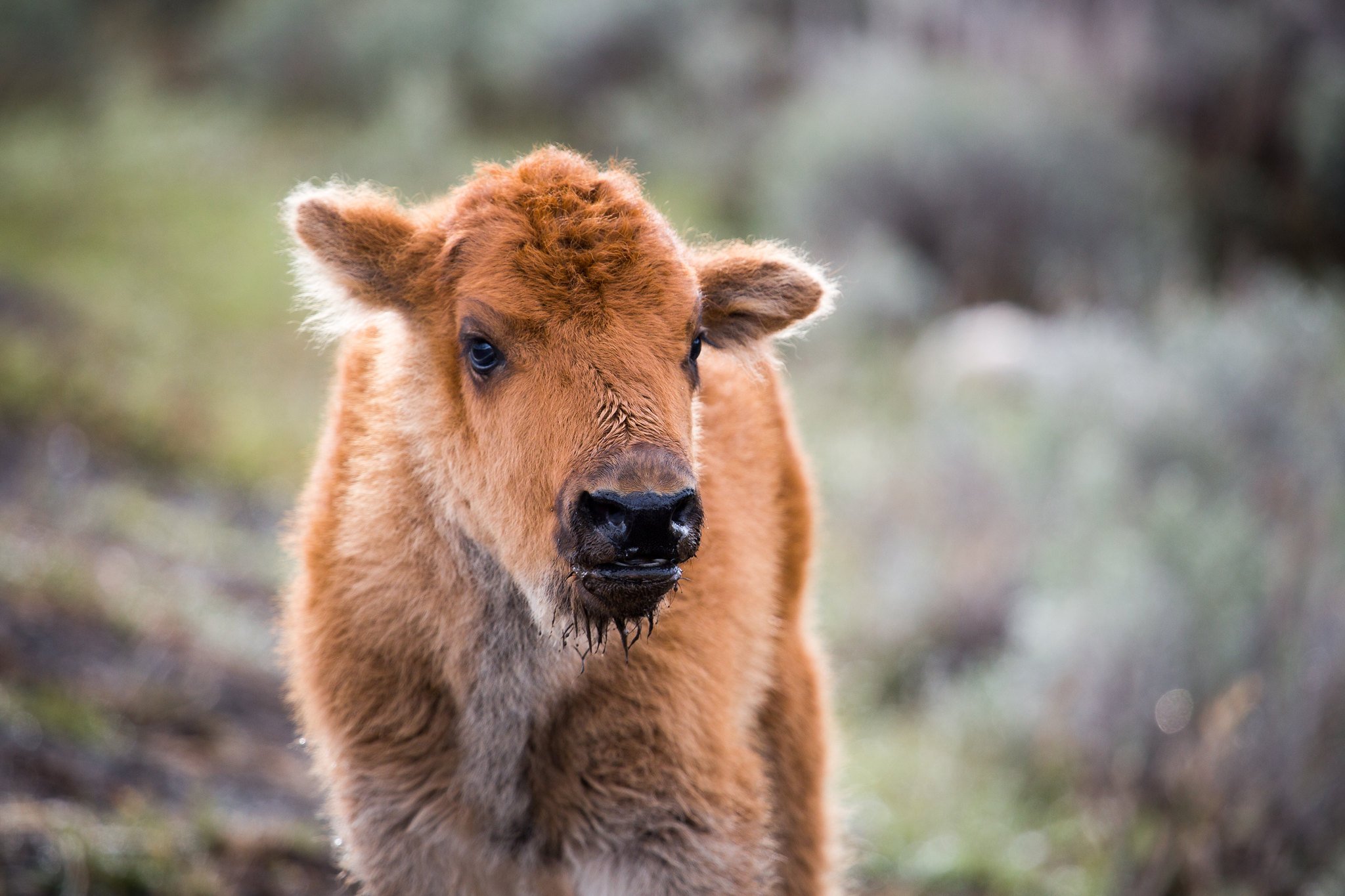Status Update: Yellowstone Bison Management Plan
The public comment period for Yellowstone National Park’s draft Environmental Impact Statement (EIS) for a new Bison Management Plan has come to a close.
The release of the draft EIS was the latest step in the park’s efforts to update their bison management plan to reflect significant progress made since the original Interagency Bison Management Plan was implemented more than 20 years ago. During the last two decades, the Yellowstone herd has made a remarkable recovery, with the population as healthy and robust as it has been in over 150 years.
A bison calf in Yellowstone National Park. An updated Yellowstone Bison Management Plan will help set the stage for a future where productive collaboration and problem solving between the park, Tribes, state, and conservation advocates is the norm. (Photo NPS / Neal Herbert)
A new Yellowstone Bison Management Plan is an opportunity to shift how Yellowstone bison are managed, including moving away from the ship-to-slaughter model of population control and range constriction to one focused on Tribal partnership and cooperation and the conservation and restoration of our most ecologically and culturally significant wild bison herd.
In short, an updated plan represents a vital opportunity to retain the progress made in the last two decades and set the stage for smart, sustainable bison management for years to come.
During the 60-day comment period, the public was encouraged to review and submit comments on the planning documents as a way of contributing to the ongoing and future management of Yellowstone’s iconic bison herd.
The Greater Yellowstone Coalition submitted comments that, broadly speaking, centered on advocating for the following considerations.
That any plan must support the long-term genetic and ecological health of Yellowstone bison and provide ample opportunity for bison to play their important ecological and cultural role on the broader landscape of the Greater Yellowstone Ecosystem.
That any plan must allow for meaningful progress toward managing bison as a valued native migratory wildlife species by accommodating and planning for the natural migration of bison to and from important winter range and calving grounds outside the park.
Bison grazing in Round Prairie near Pebble Creek Campground. Yellowstone National Park is in the middle of updating its Yellowstone Bison Management Plan and just released the attendant draft Environmental Impact Statement. (Photo NPS / Jacob W. Frank)
To those of you who submitted your own personalized comments, thank you. Your continued support of Yellowstone bison and the wellbeing of the Greater Yellowstone Ecosystem as a whole is impactful and inspirational.
So, what’s next?
Now, the Park Service will take time to read and analyze the comments before making any revisions to the draft EIS and releasing a final EIS by summer of 2024.
Want to chat further? You can reach out to me at sdrimal@greateryellowstone.org.
—Shana Drimal, Senior Wildlife Conservation Associate



